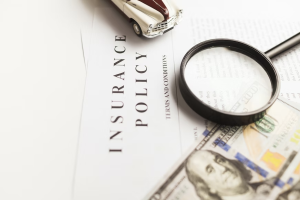Natural disasters are a reality of life, and they can lead to loss of life and property. In the EU and US, there are different approaches to these events, but both include some form of natural disaster insurance.
What is natural disaster insurance?
Natural disaster insurance covers damage to your home and personal belongings, as well as those of your business. It also protects you from medical expenses, legal expenses and travel costs if you have to relocate because of a natural disaster.
This type of insurance can be expensive so it’s important that you understand exactly what it does and doesn’t cover before purchasing it.
Importance of insurance coverage for natural disasters
With the frequency and severity of natural disasters increasing, it is more important than ever for businesses to have insurance coverage for natural disasters. Insurance can help you rebuild after a disaster, recover quickly if your business is affected and even cover medical expenses caused by the disaster.
In addition to property damage, insurance coverage also covers personal injuries caused by earthquakes or floods which means that you won’t have to pay out-of-pocket for expensive medical bills after an earthquake destroys your home or flooding forces you onto dry land for weeks at a time.
Overview of natural disasters in the EU
In the EU, there are more natural disasters than in the US. The EU has a stronger social safety net and less private insurance coverage than the US does. In general, however, its legal and regulatory framework for natural disaster insurance is better than that of America’s.
Although both regions experience hurricanes, tornadoes and earthquakes–which can cause extensive damage when they strike–the total number of natural catastrophes per year is much greater in Europe than it is in America:
- There were over 1,100 reported events between 1983 and 2013; during this period there were only 344 in North America (Europe excludes Russia).
- The ten most damaging events alone accounted for an estimated $10 billion worth of damages each year.
Most European countries are more vulnerable to natural disasters than the US is.
The US and Europe have very different natural disaster risks. While both regions are vulnerable to earthquakes, tornadoes and wildfires, the US generally experiences fewer of them than Europe does.
Europe also has a higher risk of flooding due to its higher population density than the US; more people means more buildings with plumbing systems that can overflow during heavy rains or snowmelt in wintertime.
Europe’s temperate climate makes it vulnerable to heat waves as well–and these events are predicted to become more frequent over time due to climate change effects like rising temperatures and increased humidity levels (both conditions make air feel warmer).
Many European countries have a strong social safety net but not enough private insurance coverage.
The social safety net in Europe is quite different from that in the United States. In some countries, like Denmark and Sweden, there is a strong social safety net with universal health care coverage and unemployment benefits. This means that if you lose your job or develop an illness, you won’t go bankrupt due to medical bills or have trouble paying rent because of lost wages.
However, other European countries do not have such robust systems: the United Kingdom only offers partial health care coverage after retirement age; Germany provides only basic unemployment benefits that are tied to previous salary levels; Italy has no universal pension system at all (though some companies offer private pensions).
Types of insurance coverage available
The following table provides an overview of insurance policies available for different types of natural disasters, as well as levels of coverage. The second half lists locations where you can purchase these policies.
- Type of Insurance Coverage: This is the type of damage that a policy will cover if it occurs (e.g., fire).
- Level of Coverage: This indicates how much money you receive from your insurer after filing a claim (e.g., $25,000).
- Location: Where you can purchase this type of policy.
Government support for natural disaster insurance
The role of government support for natural disaster insurance is important. Governments can provide financial or regulatory support for insurers, direct relief and recovery efforts, or indirect subsidies and tax breaks.
In the United States, the federal government provides funds for relief efforts after a disaster has occurred through FEMA (Federal Emergency Management Agency). Direct government assistance in the form of grants allows homeowners who have suffered losses from a natural disaster to repair their homes or rebuild them entirely. This type of assistance often comes with restrictions on what types of repairs may be made; these restrictions help ensure that money is spent wisely so that it doesn’t go toward unnecessary repairs that would only increase future risks from another storm bringing further damage to newly restored structures (such as shingles being installed without proper ventilation).
Overview of natural disasters in the US
The US is less vulnerable to natural disasters than Europe. This is due to a number of factors, including the fact that the US has a better social safety net in place and more private insurance coverage. In addition, there are several government programs available for those who need assistance following a natural disaster:
For example, FEMA provides aid after earthquakes or floods with funding from its Disaster Relief Fund (DRF). The DRF is funded by taxpayers’ money as well as donations made by businesses through voluntary contributions. It was created after Hurricane Katrina hit Louisiana in 2005; since then it has been used more than 30 times throughout the country–most recently following Hurricane Harvey last year.
Types of insurance coverage available
Insurance policies come in many shapes and sizes. Each type of policy offers different types of coverage, but they all have one thing in common: they’re designed to help protect you from financial loss related to certain events or situations.
Homeowners insurance covers damage caused by things like fire, theft and vandalism at your home or condo. It also covers liability if someone gets hurt on your property (for example, if a guest slips on ice outside). In addition to this basic protection, some homeowners’ policies include extended coverage for additional things like earthquake damage or flooding–you’ll want to check what’s included before buying a policy!
Renters insurance is similar but focuses on protecting personal belongings rather than the structure itself; renters typically don’t own their homes but instead pay rent for them so their landlord can cover repairs if something happens there (like water leaks). Similarly, business owners may opt into commercial property insurance that protects against losses related specifically towards work environments such as offices or factories–this could include anything from providing compensation after an employee gets injured working late nights without overtime pay!
Does the US government provide support after natural disasters?
The US government does not provide support after natural disasters. It only provides support after man-made disasters, such as terrorism or war. The reason for this is because the government believes that a disaster that was caused by nature should be considered an act of God–i.e., something beyond our control. However, if there’s a terrorist attack or war on US soil, then it can be considered an act of man and therefore something that we can prevent from happening again in the future by taking action against those responsible (e.g., catching terrorists).
Legal and regulatory framework differences
In the United States, there is no common framework for natural disaster insurance. Each state has its own laws and regulations regarding insurance coverage for natural disasters. While some states do have laws that require insurers to provide flood insurance or earthquake coverage as part of their standard homeowners’ policies, these policies often only cover damage caused by earthquakes or floods that occur within 50 miles of an insured property. They generally do not cover damage caused by other types of natural disasters such as hurricanes or tornadoes.[1]
In contrast to the US legal system’s laissez-faire approach towards regulating private sector involvement in the provision of insurance services–which allows companies like State Farm Mutual Automobile Insurance Company (State Farm), Allstate Corporation (Allstate), Progressive Casualty Insurance Company (Progressive) and Farmers Insurance Group (Farmers) compete freely with each other without government intervention–the European Union has taken steps toward centralizing authority over its member countries’ economies through legislation passed at both national and supranational levels.[2]
Where do you need natural disaster insurance?
When you think of natural disasters, earthquakes, hurricanes and tornadoes may come to mind. However, there are many other types of natural disasters that can affect your home or business. These include:
- Fires
- Floods
- Heavy rain and snowfall
If you live in an area prone to these types of events (and even if you don’t), it’s important that you understand what type of insurance coverage is available for them and how much coverage is best for your needs.
Better safe than sorry – staying insured is good in most cases
If you’re going to be living in a country with frequent natural disasters, it’s good to keep your insurance coverage up-to-date.
Insurance can help you recover from the financial effects of a natural disaster and get back on your feet again. The more thorough the coverage, the better protected you will be in case something happens. However, not all insurance policies are created equal: some cover more than others do – but they also cost more money too!
Just like buying any other product or service in life, it pays to shop around for the best deal on an insurance policy that matches your needs as closely as possible before signing up for one (or more) with any provider(s).
Conclusion
In conclusion, natural disaster insurance is a good idea if you want to protect yourself from the unexpected. If you live in an area that is prone to hurricanes, earthquakes or other disasters, then it’s essential for you to have this coverage. You can take steps today by calling up your local agent or broker and discussing what type of policy would best suit your needs.



Average Rating